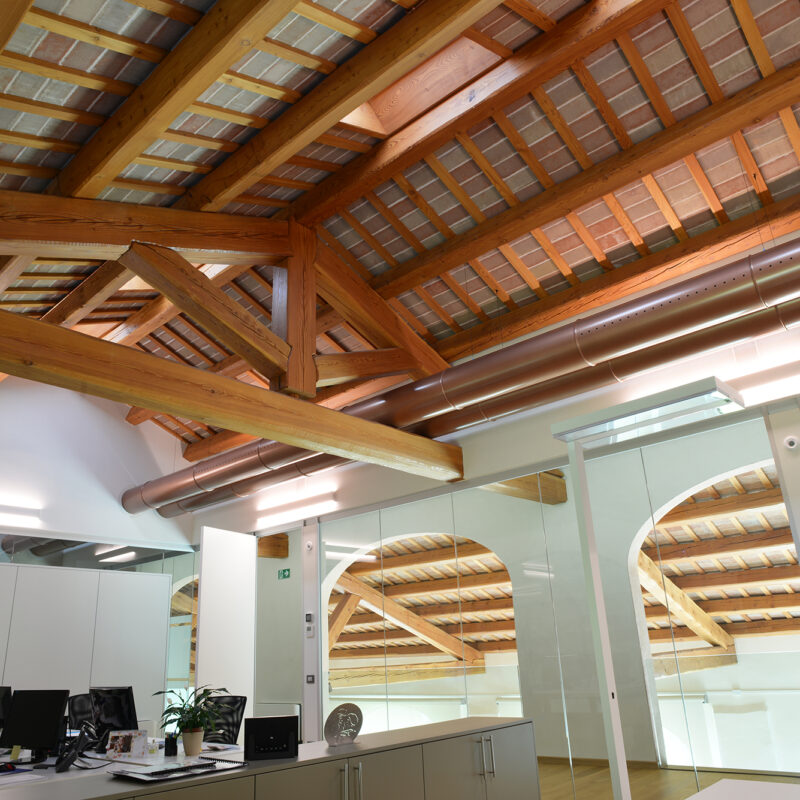
The increasingly widespread use of numerical control machines has seen the development of new construction systems alongside traditional methods. As an alternative to the classic slotted beam joints, mechanical joints have been developed using metal components or adhesives. Progress also affects the choice of wood used for structural applications: in addition to solid wood, laminated and bi-lamellar wood products are now used.
Bi-lamellar beams consist of two lamellas, each formed by finger-joined joists, glued together along their length.
From a performance point of view, the load-bearing capacity of a bi-lamellar beam is similar to that of a laminated beam. The main difference lies in its appearance: bi-lamellar beams are produced using vertical joints only, which means that the side profile is similar to that of a solid wood beam.
The selection of wood at the base of the finger-jointed joints and the uniform drying process reduce cracks to a minimum and avoid the defects typical of solid wood. It is also possible to produce tri-lamellar beams by using three lamellas.
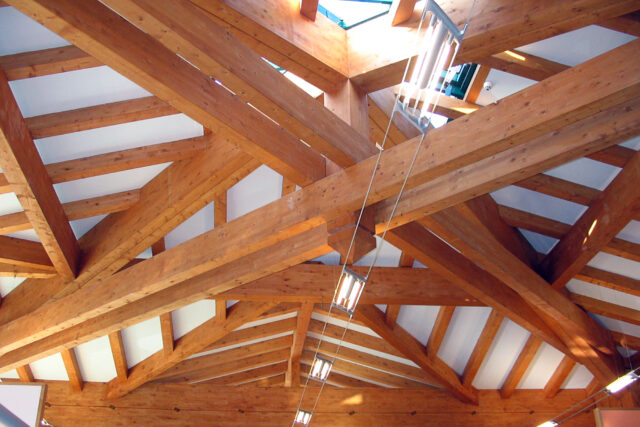
Laminated wood is a composite material, consisting of several strips that are hot-glued and pressed together to form a single element. This procedure allows the laminar element to maintain the advantages of solid wood (mechanical resistance), while reducing and exceeding its limits (cracks and deformations).
From an aesthetic point of view, the wood is laminated both horizontally and vertically. Laminated wood beams can be produced with a curved axis to create striking architectural solutions, and are recommended for use when constructing large sections or spans.
Preferably, they should be used indoors, however, if suitably treated, laminated beams may also be used outdoors.
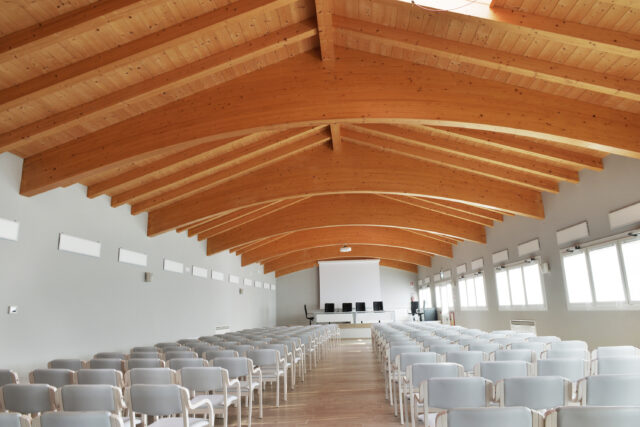
Solid wood beams represent the most classic and traditional type of structural wood.
They consist of a solid, debarked and squared trunk. Thanks to their natural appearance and the wide choice of squaring options available, solid beams represent sought-after aesthetic elements.
On the other hand, solid wood may include knots giving the appearance of imperfections, it and in addition it may be subject to cracking, sagging and twisting. With appropriate seasoning wooden beam can still achieve excellent stability, resulting in good durability and mechanical properties.
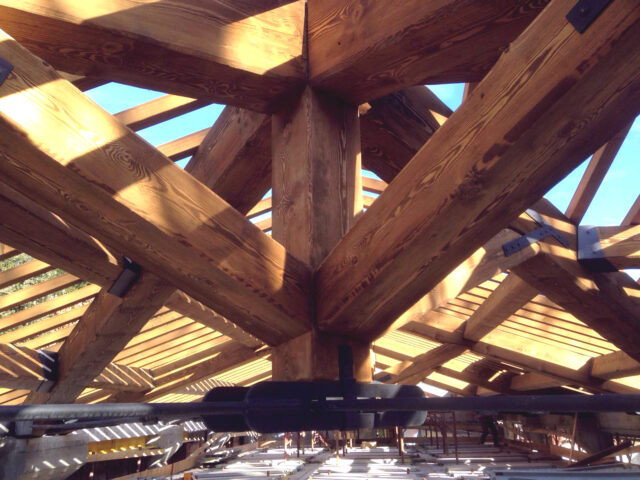
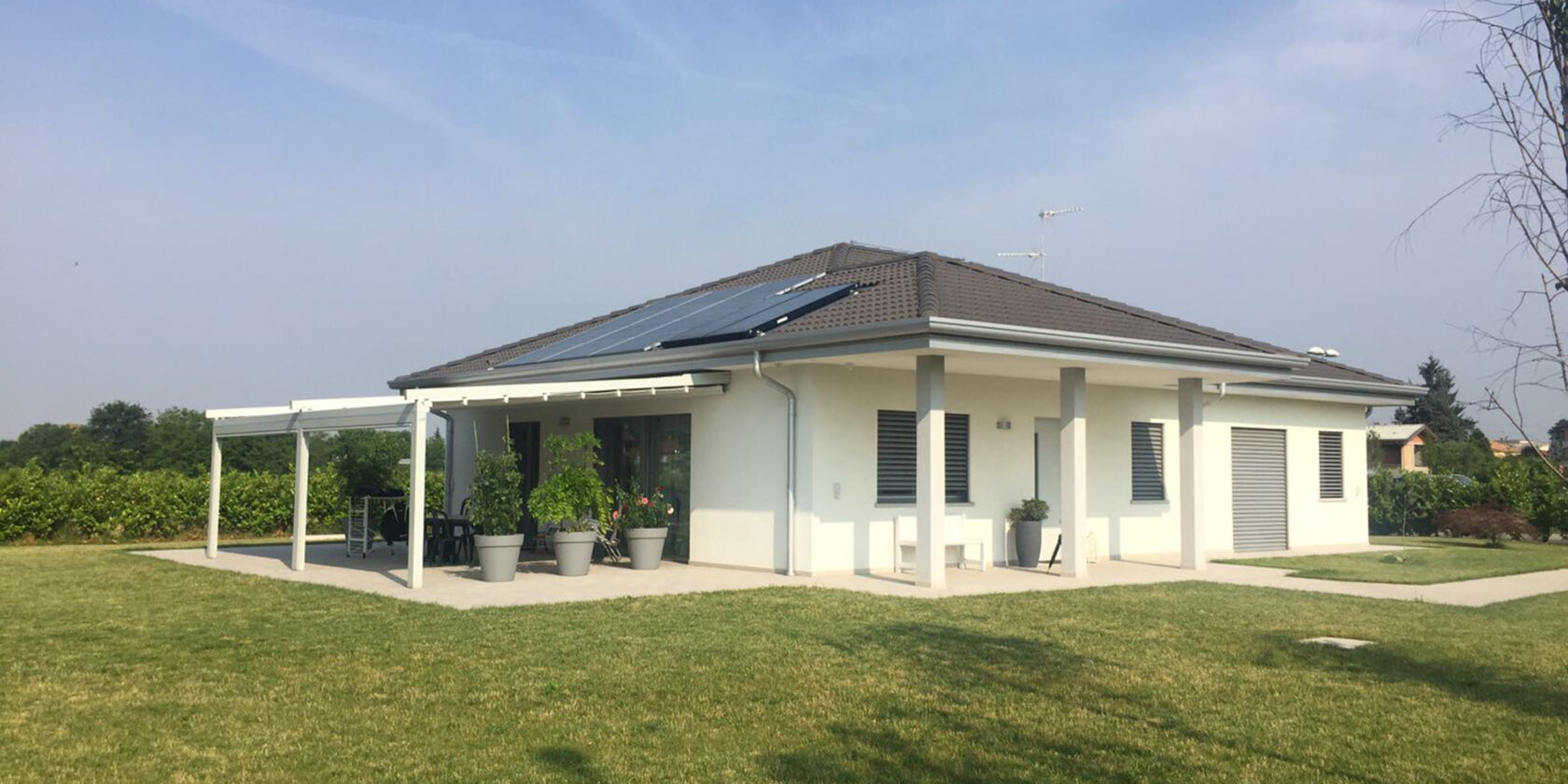
desiderabillen